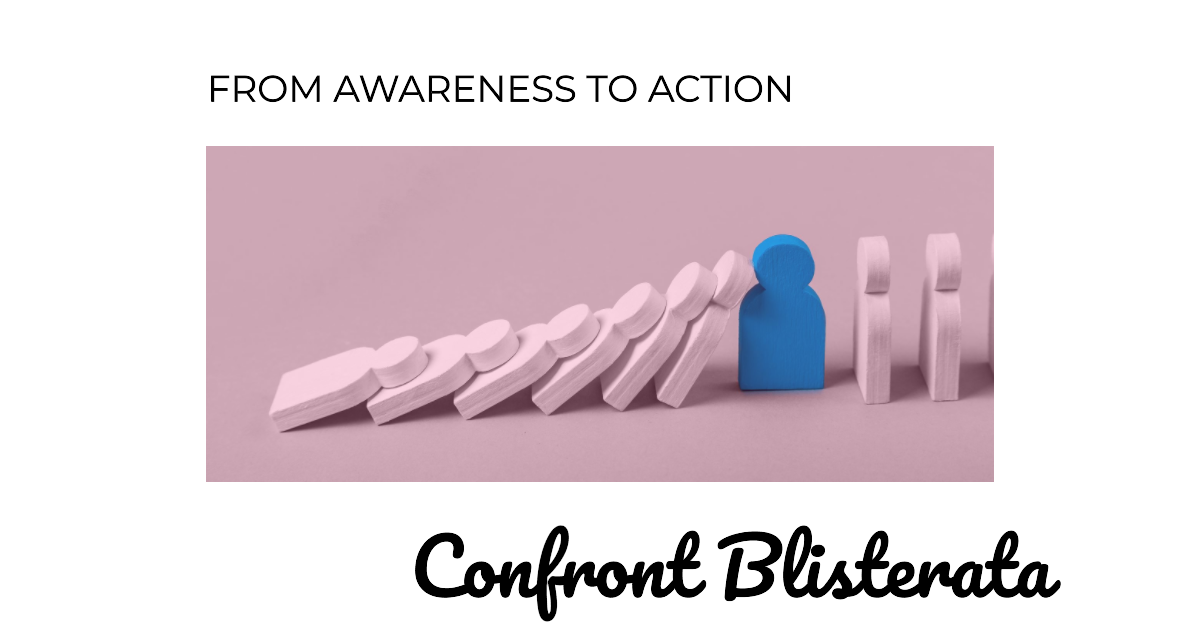When it comes to skin conditions, few are as persistent and discomforting as blisterata. This prevalent ailment is caused by the herpes simplex virus, a stealthy intruder that can lie dormant within the body for extended periods, only to resurface unexpectedly, wreaking havoc in the form of painful blisters on the skin. While anyone can fall victim to blisterata, those with compromised immune systems are particularly susceptible. Join me as we delve into the world of this intricate skin concern, learning about its origins, symptoms, and available treatments.
Unmasking the Symptoms of Blisterata
When it comes to identifying blisterata, a set of distinctive symptoms act as telltale signs of this skin condition. The most prominent among these is the appearance of painful blisters on the skin. These blisters, often small and round in shape, can hold clear fluid or blood, creating discomfort for those who experience them. While they can manifest anywhere on the body, they tend to emerge most frequently on areas like the mouth, lips, genitals, or buttocks.
Accompanying these painful blisters, some individuals with blisterata may also encounter a mild fever, headache, muscle aches, and fatigue. These symptoms, although transient, can cause considerable inconvenience during their presence.
In addition to the above, blisterata may also present itself through other discomforting sensations such as itching, burning, swelling, redness, tenderness, and even discharge. However, it’s important to note that the severity and combination of symptoms can differ from person to person. Some may grapple with only a handful of blisters, while others might experience a more extensive outbreak involving numerous blisters.
Given the variation in symptoms and their duration, a medical diagnosis becomes pivotal. Consulting a healthcare professional is vital, as blisterata can sometimes mimic other skin conditions like impetigo or contact dermatitis. A precise diagnosis ensures that the most effective treatment plan is pursued.
It’s worth considering these aspects about blisterata symptoms:
- Blisters and Their Nature: The blisters typically rupture within a few days, forming crusts as they heal.
- Potential for Scarring: Scratching or picking at the blisters could lead to scars.
- Contagious Nature: Open blisters can make blisterata contagious.
- Recurrence: Unfortunately, blisterata can reappear even after initial healing.
For those diagnosed with blisterata, preventing its spread is paramount. This involves avoiding direct contact with the blisters, practicing frequent hand hygiene, and adopting safe sexual practices such as using condoms.
Unveiling the Culprits: Understanding the Causes of Blisterata
Blisterata, like a mystery waiting to be solved, finds its origins in the herpes simplex virus (HSV). This insidious virus comes in two distinct forms: HSV-1 and HSV-2, each wielding its unique attributes. HSV-1 often manifests as cold sores and oral herpes, while HSV-2 tends to be the culprit behind genital herpes, though not exclusively so.
Transmission of blisterata can occur through multiple avenues, all linked to direct contact with the virus or an infected person’s bodily fluids.
The following pathways shed light on how blisterata gains its foothold:
- Contact with Infected Fluids: The virus’s spread can transpire through direct contact with the blisters themselves, as well as via the individual’s saliva or genital secretions. Everyday items like towels and utensils can also serve as potential vehicles for virus transmission.
- Direct Skin Contact: Even after the blisters have subsided, blisterata can maintain a tenuous presence on the skin. This residual presence can lead to transmission through touch, underscoring the importance of proper hygiene.
- Fever and Stress: The body’s resilience against blisterata can waver during times of fever or stress. These conditions compromise the immune system’s efficiency, making it more challenging for the body to stave off the virus, which might then seize the opportunity to resurface.
- Sun’s Influence: Surprisingly, sun exposure can factor into blisterata’s emergence. The sun’s rays can damage the skin, rendering it more susceptible to the virus. As such, those with a history of blisterata may want to take additional precautions in sunny environments.
- Immunocompromised States: Individuals with weakened immune systems, such as those with HIV/AIDS or undergoing cancer treatment, find themselves at higher risk of contracting blisterata. The virus capitalizes on the weakened defences, potentially leading to more frequent and severe outbreaks.
When certain risk factors come into play, proactive measures become indispensable in averting the virus’s propagation:
- Avoiding Close Contact: Steer clear of individuals harbouring blisterata to minimize potential exposure.
- Hand Hygiene: Regular handwashing serves as a simple yet effective barrier against transmission.
- Safe Sexual Practices: Incorporating condoms during intimate encounters can drastically reduce the risk of viral exchange.
- Limiting Direct Contact: Abstaining from contact with active blisters is key to preventing transmission.
- Vigilant Hygiene: Maintaining the cleanliness and dryness of blisters can prevent further spread.
Finding Relief: Navigating the Treatment Path for Blisterata

In the quest to alleviate the discomfort caused by blisterata, a variety of treatment options offer relief to those grappling with this condition. Among these, antiviral medication emerges as the stalwart contender, wielding the power to curtail the outbreak’s duration and mitigate the severity of its symptoms. Particularly beneficial for those experiencing recurrent or intense outbreaks, antiviral medication stands as the cornerstone of blisterata management.
Supplementing the primary antiviral approach, several auxiliary methods contribute to comprehensive symptom relief:
- Pain Relievers: Over-the-counter pain relievers like ibuprofen and acetaminophen can provide respite from the pain and discomfort inflicted by blisterata.
- Cool Compresses: Applying cool compresses to affected areas serves to quell swelling and inflammation, offering a soothing reprieve.
- Over-the-Counter Creams: Topical treatments such as hydrocortisone cream can prove effective in relieving the itching and burning sensations linked to blisterata.
- Home Remedies: While the world of home remedies is replete with potential solutions, cautious exploration is advised. Approaches like tea tree oil or honey application can hold promise, but consulting a healthcare professional beforehand is crucial, as individual responses can vary.
Upon confronting the spectre of blisterata, seeking medical guidance is paramount. A doctor’s expertise ensures an accurate diagnosis and tailors an optimal treatment regimen. However, it’s important to bear in mind that while no cure exists for blisterata, its impact can be managed through a combination of medical interventions and self-care measures.
Key considerations regarding blisterata treatment include:
- Prompt Antiviral Initiation: Commencing antiviral medication as soon as blisters manifest enhances its efficacy.
- Completing the Course: Adhering to the prescribed antiviral regimen, even if symptoms abate, is crucial.
- Anticipating Side Effects: Awareness of potential side effects, such as nausea, vomiting, or diarrhoea, facilitates informed decision-making.
- Appropriate Pain Reliever Use: Following recommended dosage guidelines ensures effective pain relief.
- Mindful Cool Compress Application: Applying cool compresses for 10-15 minutes at a time ensures maximum benefit.
- Over-the-Counter Cream Adherence: Adhering to the usage directions of over-the-counter creams optimizes their effectiveness.
- Home Remedy Prudence: While exploring home remedies, remember that they should never substitute proper medical attention and treatment.
Steering Clear: Navigating the Path to Blisterata Prevention

A proactive approach serves as the foundation of blisterata prevention, empowering individuals to minimize their vulnerability to this relentless skin condition. Incorporating a series of strategic steps into daily routines can significantly reduce the risk of encountering blisterata:
- Steer Clear of Infected Individuals: Foremost among preventive strategies is avoiding contact with those afflicted by blisterata. Keeping a safe distance, particularly during outbreaks, helps curtail the virus’s reach. This encompasses refraining from activities like kissing, sharing food or utensils, and engaging in sexual activity.
- Prioritize Hand Hygiene: Consistent handwashing with soap and water emerges as a robust barrier against various germs, including the herpes simplex virus. Rigorous hand hygiene, especially following toilet use, diaper changes, or waste handling, is paramount.
- Embrace Condom Usage: Employing condoms during intimate encounters provides an additional layer of protection against herpes simplex virus transmission. When uncertain about a partner’s health status, condom usage remains a prudent choice.
- Minimize Direct Contact with Blisters: Individuals afflicted with blisterata must exercise caution to avoid touching the blisters themselves. Doing so helps prevent virus transmission to other parts of the body or to other people.
- Preserve Cleanliness and Dryness: Maintaining blisters in a clean and dry state serves as a preventative measure against infection. A thorough washing with soap and water followed by the application of a sterile, dry bandage facilitates optimal healing.
- Resist Temptation to Pick: Succumbing to the urge to pick at blisters can heighten the risk of infection and leave behind unsightly scars. Exercise restraint and let the body’s natural healing process unfold.
Conclusion
In the intricate realm of skin conditions, blisterata emerges as a formidable contender, driven by the stealthy herpes simplex virus. This common affliction, characterized by painful blisters and often accompanied by fever and discomfort, underscores the importance of understanding its origins, symptoms, and potential treatments.
While blisterata may not yet have a definitive cure, its management lies within the realm of possibility. Antiviral medications, coupled with pain relievers and topical treatments, offer relief from its grasp. Moreover, vigilant adherence to preventive measures, such as avoiding close contact with infected individuals, maintaining impeccable hand hygiene, and practising safe sexual encounters, forms a robust defence against the virus’s propagation.
Blisterata’s grip might waver, but its impact can be managed with knowledge and care. This skin condition beckons us to delve deeper into its nuances, urging individuals to prioritize personal well-being while fostering a community-wide commitment to prevention. With education and diligence, the puzzle of blisterata is gradually unravelled, paving the way for healthier, more informed lives.
As we continue our journey, remember that knowledge is a powerful ally in the face of adversity. By uniting understanding and action, we empower ourselves and those around us to navigate the complex landscape of blisterata with resilience and resolve.
FAQ
What is blisterata and what causes it?
Blisterata is a skin condition caused by the herpes simplex virus (HSV). It leads to the formation of painful blisters on the skin, often accompanied by other symptoms. The virus can lie dormant within the body and resurface to cause outbreaks.
What are the common symptoms of blisterata?
The primary symptom of blisterata is the appearance of painful blisters on the skin, which can contain clear fluid or blood. Other symptoms include fever, headache, muscle aches, fatigue, itching, burning, redness, and tenderness. The range and amalgamation of symptoms may differ.
How is blisterata transmitted?
Blisterata can be transmitted through direct contact with infected blisters, saliva, or genital secretions. It can also spread through touching the skin where the virus is present, as well as through shared items like towels and utensils. Close contact with infected individuals and compromised immune systems increase the risk of transmission.
What are the available treatments for blisterata?
Antiviral medications are a primary treatment for blisterata, helping to reduce the severity and duration of outbreaks. Pain relievers, cool compresses, and over-the-counter creams can provide symptom relief. Home remedies like tea tree oil may also offer benefits, but consulting a healthcare professional is recommended.
Can blisterata be prevented?
Yes, blisterata can be prevented through various measures. These include avoiding close contact with infected individuals, practicing good hand hygiene, using condoms during sexual encounters, and refraining from touching blisters. Keeping blisters clean and dry and resisting the urge to pick at them also contribute to prevention.
